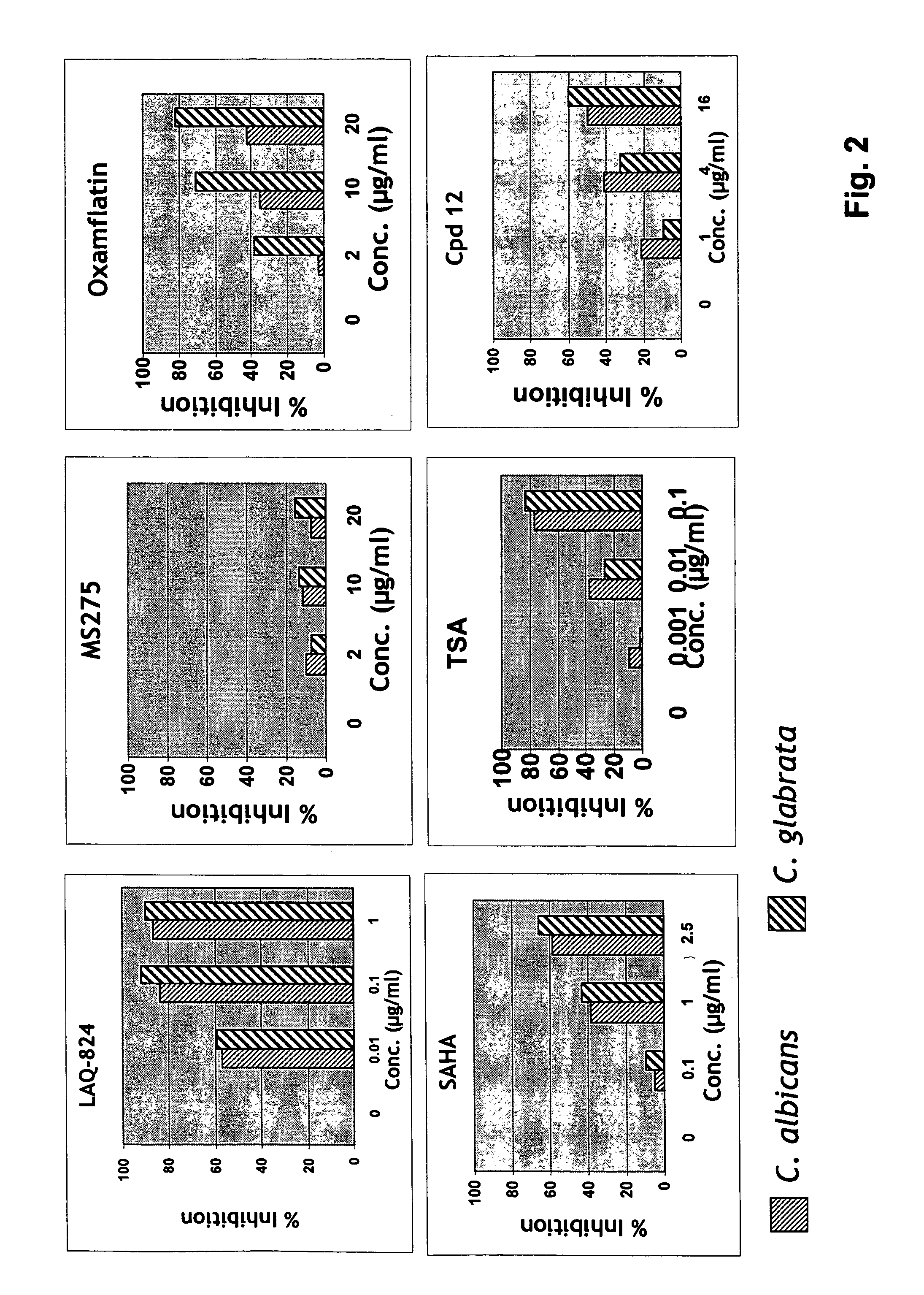Histone deacetylase inhibitors for enhancing activity of antifungal agents
a technology of histone deacetylase and antifungal agents, which is applied in the field of compositions and methods of treating fungal infections, can solve the problems of high concentration of tsa required, toxicity to the infected host, and “trailing growth”, and achieves the effect of increasing the cidal increasing the post-antibiotic effect of an antifungal agen
- Summary
- Abstract
- Description
- Claims
- Application Information
AI Technical Summary
Benefits of technology
Problems solved by technology
Method used
Image
Examples
example 1
Synergistic Effect of HDAC Inhibitors with Antifungal Agents
[0224] Stock solutions (10 mg / ml) of HDAC inhibitors, including known HDAC inhibitors LAQ-824, MS275, oxamflatin, SAHA and TSA, and antifungal agents are made in dimethyl sulfoxide (DMSO). This is subsequently diluted in medium so that the final concentration of DMSO is 0.5%.
[0225] The compounds of the present invention typically do not have antifungal activity (although, within the scope of the invention they may) nor are they toxic to a host cell at the concentrations at which they synergize with an antifungal agent.
[0226] A minimum inhibitory concentration (MIC80) of a HDAC inhibitor or an antifungal agent (or both) is the concentration that reduces growth of a fungus by 80%, compared to the growth of the fungus in the absence of the HDAC inhibitor or antifungal agent.
[0227] Mammalian cytotoxicity of the HDAC inhibitors is determined by the reduction of 3-(4,5-dimethylthiazol-2-yl)-2,5-diphenyltetrazolium bromide (MT...
PUM
| Property | Measurement | Unit |
|---|---|---|
| compositions | aaaaa | aaaaa |
| concentrations | aaaaa | aaaaa |
| azole-resistance | aaaaa | aaaaa |
Abstract
Description
Claims
Application Information
 Login to View More
Login to View More - R&D
- Intellectual Property
- Life Sciences
- Materials
- Tech Scout
- Unparalleled Data Quality
- Higher Quality Content
- 60% Fewer Hallucinations
Browse by: Latest US Patents, China's latest patents, Technical Efficacy Thesaurus, Application Domain, Technology Topic, Popular Technical Reports.
© 2025 PatSnap. All rights reserved.Legal|Privacy policy|Modern Slavery Act Transparency Statement|Sitemap|About US| Contact US: help@patsnap.com



